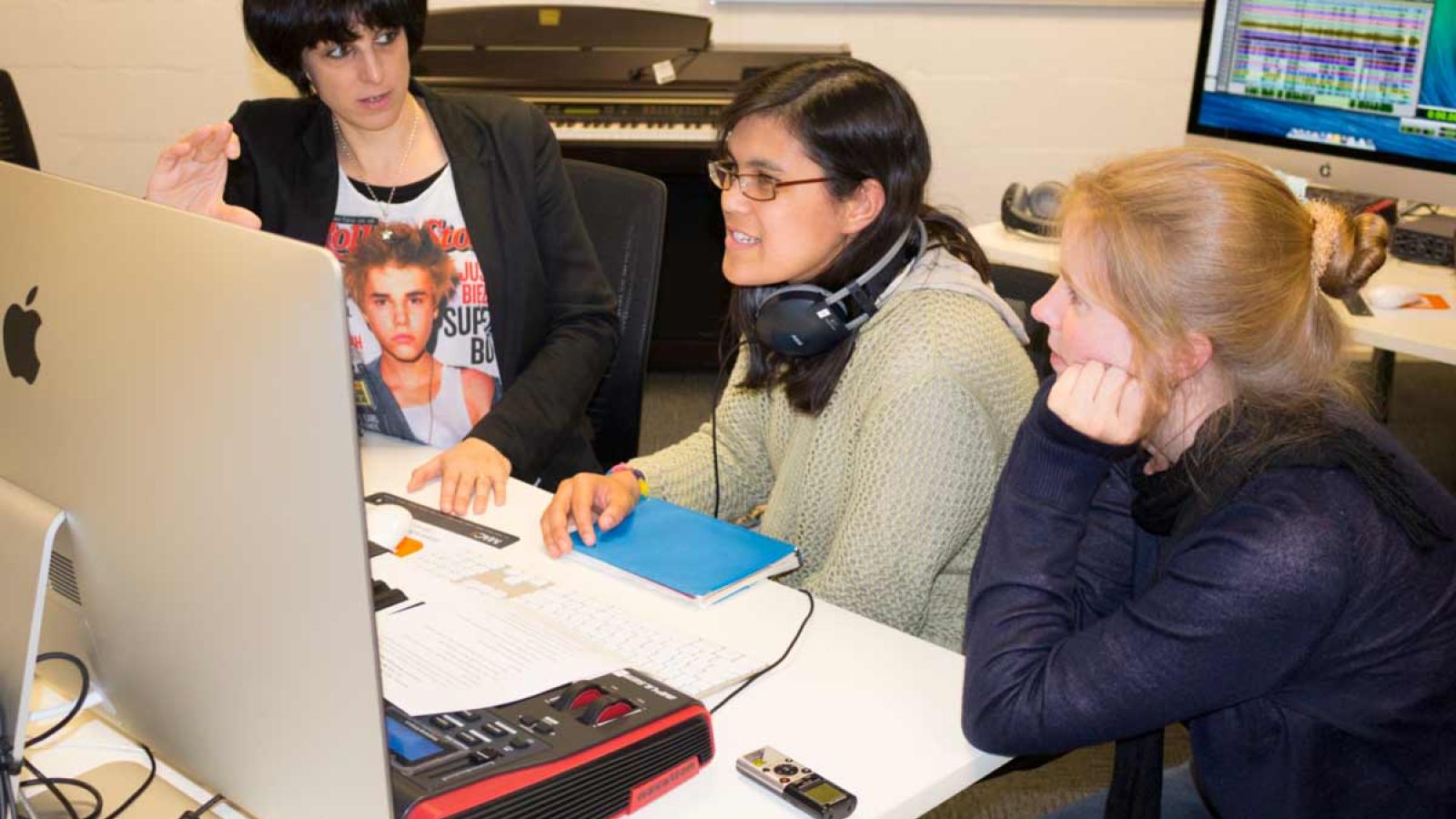New studio lab 'just the beginning' for music technology

Dr Samantha Bennett with students Rowelanne Stubbs and Gillian Colgan in the lab.
A new production suite and a partnership with industry-leader AVID is placing the ANU School of Music at the forefront of teaching in music recording and production.
The School of Music recently opened the doors to a new production studio complete with industry-standard audio production tools.
Senior Lecturer Dr Samantha Bennett says that the new studio is “just the beginning” of the School’s shift to a curriculum that keeps pace with the ever-evolving music industry.
“The ability to teach students recording and production using state-of-the art facilities is going to change the degrees we offer at the School of Music,” she says.
An expert in popular music and sound recording, Bennett is leading the charge in the School’s offerings in music technology.
She is teaching AVID Pro Tools (the industry standard in audio production) as part of a wider recording and production curriculum.
The School will soon become a certified AVID Learning Partner and offer professional qualifications in AVID software. It’s one of only a handful in Australia, and one of two providers in the ACT.
The studio space itself is designed to be creative and interactive, taking into account pedagogical best practice for lab teaching. Each station is equipped with a powerful Apple desktop computer, headphones, MIDI keyboard, and AVID Pro Tools.
“Not only do we have the best, industry standard production equipment, the space has been optimised for lab teaching and learning. The effort was worth it, the students love it,” says Bennett.
“The students have been very engaged, recording their own music and each other’s performances to work on during classes.”
The first undergraduate students to use of the new lab are in Dr Bennett’s Music Recording and Production Techniques class.
Although there was a huge amount of interest, numbers had to be capped at 40 to allow enough one-on-one time with each student. The students who were lucky enough to enrol are giving the class rave reviews.
Third-year Bachelor of Music student Gillian Colgan, a classical violinist, says that using this technology has taken her understanding of music to a whole new level.
“I’ve wanted to do music recording and production for a while, but haven’t had the chance until now,” she says.
“It’s amazing to see music annotated on-screen as you play music on the keyboard. I’ve also started listening to some of my favourite pieces of music and breaking down the different sounds and elements – it’s amazing how much control you have over sound in the production stage.”
Students also have access to the lab outside class hours so they can continue working on their projects.
This is only the beginning for music technology, which will continue evolving to keep pace with the demands of students looking to make a career in music.